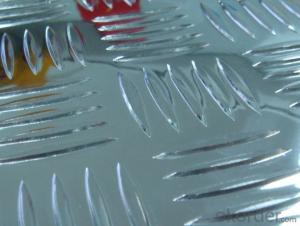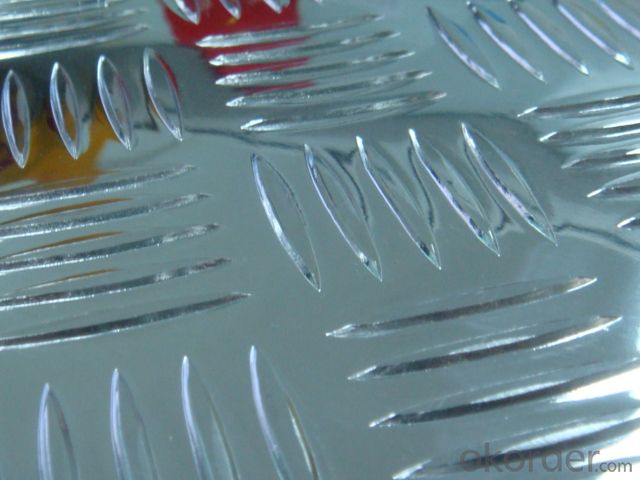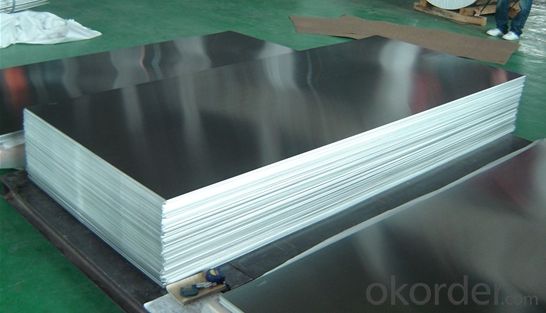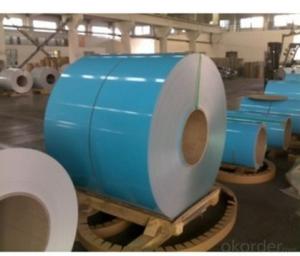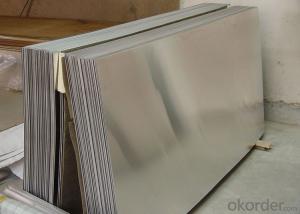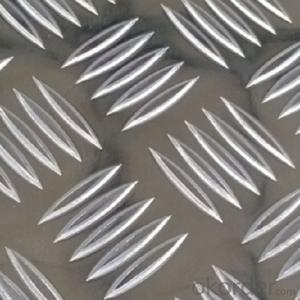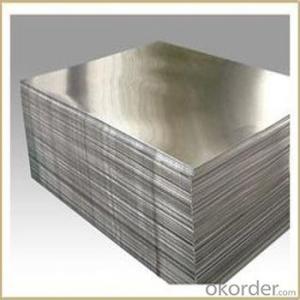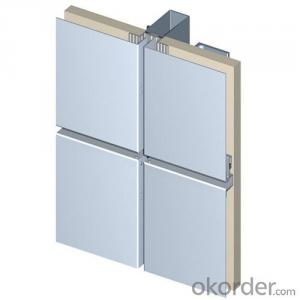4 X 10 Sheets of 3003 Aluminium Sheet and Plates
- Loading Port:
- Shanghai
- Payment Terms:
- TT OR LC
- Min Order Qty:
- 6 m.t
- Supply Capability:
- 3000 m.t/month
OKorder Service Pledge
OKorder Financial Service
You Might Also Like
1.Structure of Product Description
Cold rolled aluminum sheet is widely used in the field of construction field and decoration field, etc.
There are many different grades, such as: 1000 series, 2000 series, 3000 series, 5000 series, 6000series, etc. The detailed grade are as follows: 1010, 1050,1060,1100, 2024, 3003, 3005, 3105, 5052,5754,5083,6061,6063,8011, etc.
The temper is include H14, H22, H24, H44,H112,H114,etc.
2. Main features of the product
a.Competitive price
b.Frist-Class Service.
c. Shortest service.
3. Image.
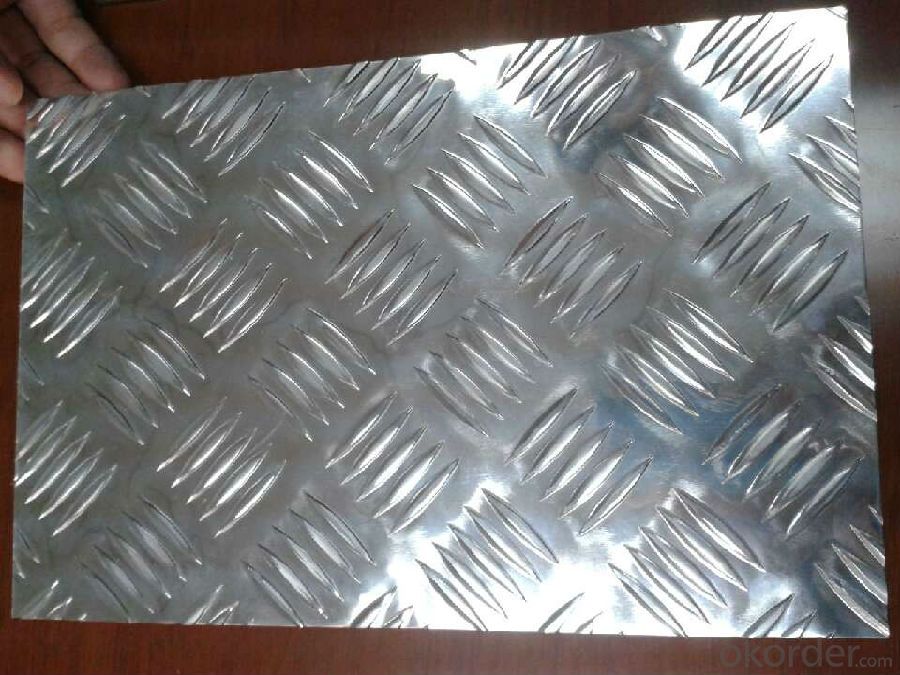
4. Product detailed sizes:
1000mm*2000mm, 1219mm*2438mm,1220mm*2440mm, 1250mm*2500mm,1500mm*3000mm, etc.
5. FAQ:
What is the quality standard?
---Usually our standard is GB3880-2006 or others.
What is the width range?
---It is from 1000mm to 2500mm, etc.
How many tons did you export in one year?
---Normally it is around 9000 tons totally.
Where is your client from?
---Normally it is from Japan, USA, ENGLISH, SINGAPORE, ETC.
What is your mainly products?
---Normally they are aluminum sheet, checkered sheet, mirror finish aluminium sheet, aluminum casting coil, etc.
- Q: Can aluminum sheets be used for bus shelters?
- Indeed, bus shelters can utilize aluminum sheets. Aluminum, a lightweight and enduring substance, finds extensive use in construction ventures, encompassing bus shelters. Its exceptional resistance to corrosion renders it apt for outdoor scenarios, where it confronts inclement weather. Moreover, aluminum sheets are conveniently malleable and can be fashioned into manifold forms and dimensions, permitting tailor-made designs and effortless installation. Employing aluminum sheets for bus shelters also entails a cost-efficient resolution as it demands scant upkeep and boasts a prolonged existence.
- Q: Are 101 aluminum sheets magnetic?
- Negative, 101 sheets of aluminum lack magnetic properties. Aluminum, being a non-magnetic metal, does not possess the ability to allure or retain magnetic forces.
- Q: Why must the aluminum oxide be electrolyzed in a molten cryolite solution?
- To electrolyse aluminium oxide, it has to be molten. However, the melting point of Al2O3 is extremely high ( 1000°C), and that would make the electrolysis very inefficient. However, Al2O3 dissolves in cryolite at much lower temperatures (lower than 900°C), which makes it a much more viable process.
- Q: Can aluminum sheets be used in food packaging?
- Yes, aluminum sheets can be and are commonly used in food packaging. Aluminum is a popular choice for food packaging due to its excellent barrier properties, which protect the food from light, oxygen, moisture, and other external factors that can spoil or contaminate it. Aluminum sheets are lightweight, durable, and resistant to corrosion, making them suitable for various types of food packaging, such as foil wraps, containers, trays, and pouches. Additionally, aluminum is a recyclable material, making it an environmentally friendly choice for food packaging.
- Q: Are aluminum sheets suitable for outdoor applications?
- Yes, aluminum sheets are suitable for outdoor applications. Aluminum is known for its excellent resistance to corrosion, even in harsh outdoor environments. It is lightweight, durable, and can withstand various weather conditions, making it an ideal choice for outdoor applications such as roofing, siding, and decorative elements.
- Q: I broke the swing-arm of a cut-off saw, need to know how to weld it back. I have a stick welder and can weld steel, but have never messed with cast aluminum.
- Tig weld is your best answer. Look for a local welding shop in your area. They usually have a minium hourly fee. I'd guess it'd be between $50-$75.
- Q: What are the weight considerations when using aluminum sheets?
- When using aluminum sheets, weight considerations play a significant role in various applications and industries. Aluminum is known for its lightweight nature, making it a preferred choice in many scenarios where weight reduction is essential. Here are some weight considerations when using aluminum sheets: 1. Structural Weight Reduction: Aluminum sheets are commonly used in industries such as aerospace, automotive, and construction, where reducing the overall weight of structures is crucial. The lightweight nature of aluminum allows for improved fuel efficiency in vehicles, increased payload capacity, and lower transportation costs for construction materials. 2. Design Flexibility: Due to its low density, aluminum sheets offer greater design flexibility compared to heavier materials. This weight advantage allows engineers and designers to create intricate shapes and structures without compromising on strength and durability. 3. Handling and Installation: The lightweight nature of aluminum sheets simplifies handling and installation processes. It requires less manpower and equipment, reducing labor costs and increasing productivity. Additionally, aluminum's low weight makes it easier to transport and maneuver during assembly or installation. 4. Corrosion Resistance: Aluminum naturally forms a protective oxide layer, which makes it highly resistant to corrosion. This characteristic eliminates the need for additional coatings or treatments, reducing weight and maintenance requirements. 5. Energy Efficiency: By using aluminum sheets, energy consumption can be reduced in various applications. For example, in the construction industry, lightweight aluminum roofing can help improve the energy efficiency of buildings by reducing the load on heating and cooling systems. 6. Transport and Shipping: Aluminum's lightweight property significantly impacts transportation and shipping costs. The reduced weight of aluminum sheets allows for larger quantities to be transported in a single shipment, reducing fuel consumption and emissions. 7. Electrical Applications: Aluminum is an excellent conductor of electricity. Its lightweight nature makes it an ideal choice for electrical wiring, conductors, and other electrical components, reducing the overall weight of electrical systems. It is important to note that while weight reduction is advantageous in many applications, the specific requirements and constraints of each project should be considered. Proper engineering analysis and consultation are crucial to ensure that the selected aluminum sheet meets the desired weight considerations while maintaining structural integrity and performance.
- Q: This question asks for an explanation of the various grades of aluminum sheets and the distinctions between them.
- <p>Aluminum sheets are categorized into different grades based on their alloy composition, which affects their properties such as strength, formability, and corrosion resistance. Common grades include 1000 series (99.00% aluminum, soft and malleable), 2000 series (aluminum-copper alloys, strong and heat treatable), 3000 series (aluminum-manganese alloys, good formability), 5000 series (aluminum-magnesium alloys, good strength and corrosion resistance), and 6000 series (aluminum-silicone-magnesium alloys, good strength and extrudability). Each grade has specific applications based on its characteristics, with 1000 series used for general purposes, 2000 series for aircraft structures, 3000 series for decorative applications, 5000 series for marine environments, and 6000 series for structural components.</p>
- Q: Does exposure to weather conditions have an impact on the durability and integrity of aluminum sheets?
- <p>Aluminum sheets are generally resistant to weathering, thanks to a protective oxide layer that forms on the surface when exposed to air. This layer prevents further oxidation and corrosion, making aluminum durable even in harsh weather conditions. However, the rate of weathering can be influenced by factors such as pollution, temperature fluctuations, and the presence of aggressive chemicals. While aluminum maintains its structural integrity well, it may experience some surface changes like patina formation over time, but these are mostly cosmetic and do not compromise the material's performance significantly.</p>
- Q: What unique cleaning techniques should be employed when cleaning aluminum sheets?
- <p>Yes, there are special cleaning methods for aluminum sheets. It's important to use a gentle, non-abrasive cleaner to avoid scratching the surface. Avoid using harsh chemicals or abrasive materials that can damage the aluminum. Instead, use a soft cloth or sponge with a mild detergent solution. Rinse thoroughly with water to remove any cleaning residue, as some detergents can leave a film on the aluminum. Dry the aluminum sheet immediately after rinsing to prevent water spots. Regular cleaning can help maintain the appearance and longevity of aluminum sheets.</p>
Send your message to us
4 X 10 Sheets of 3003 Aluminium Sheet and Plates
- Loading Port:
- Shanghai
- Payment Terms:
- TT OR LC
- Min Order Qty:
- 6 m.t
- Supply Capability:
- 3000 m.t/month
OKorder Service Pledge
OKorder Financial Service
Similar products
Hot products
Hot Searches
Related keywords
